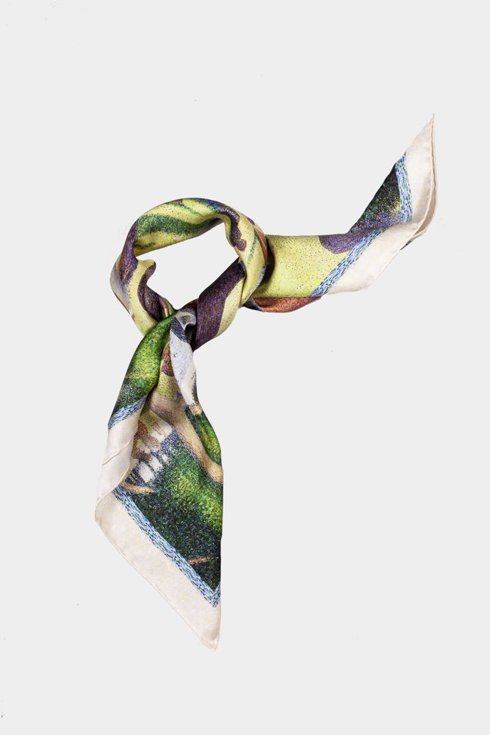Silk scarf 'A Sunday on La Grande Jatte' Georges Seurat
Spring is shyly approaching in the Northern Hemisphere. Longer and warmer days, more light, and the first signs of nature rebirth encourage us to spend more time outside. There is a famous painting which is the quintessence of outdoor leisure time in a city: A Sunday Afternoon on the Island of La Grande Jatte by the French post-Impressionist painter and draftsman Georges Seurat. Here’s everything you must know about this iconic canvas.
In this large painting, Georges Seurat depicted people relaxing in a suburban park on an island in the Seine River called La Grande Jatte. It may be just an ordinary day with ordinary people. The cast comprised three dogs, eight boats, and 48 people as they congregated for a Sunday afternoon in the sunny park. But, the titular locale was a favorite of prowling prostitutes, so some historians suspect that fish are not what the fishing-pole-toting woman on the left is hoping to hook. The same speculation has emerged around the lady on the right, with a monkey on a leash and a man on her arm.
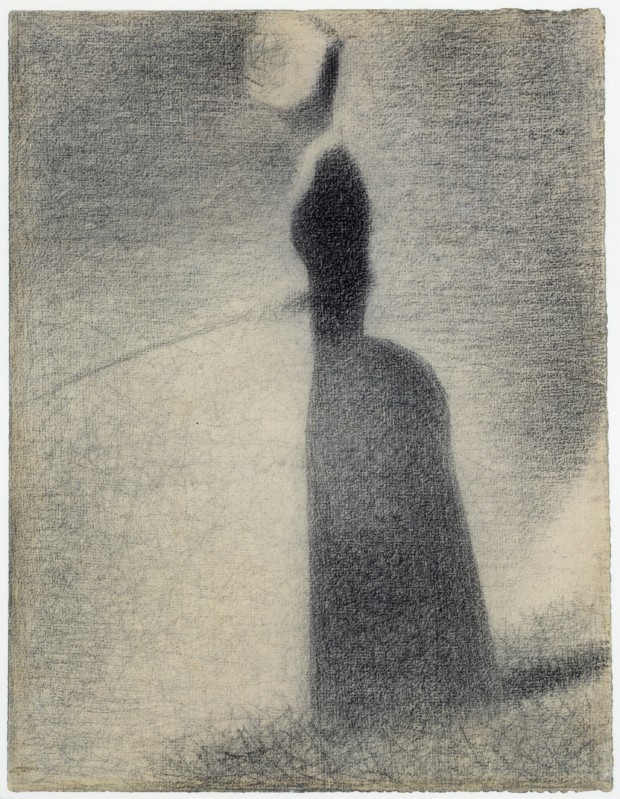
It is the most famous example of the use of highly systematic and “scientific” technique, subsequently called Pointillism. It relies on the ability of the eye and mind of the viewer to blend the color spots into a fuller range of tones. Seurat himself preferred to call his technique “chromo-luminarism,” a term he felt better stressed its focus on color and light.
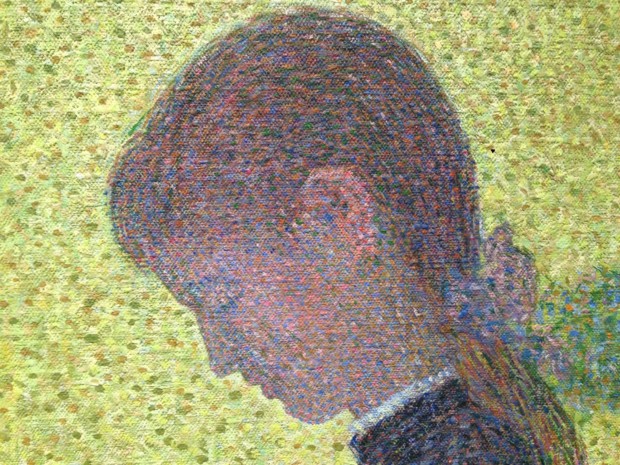
Seurat embraced the subject matter of modern life so typical to Impressionistartists, but he went beyond their interest of capturing the moment. Seurat sought to evoke permanence by recalling the art of the past, especially Egyptian and Greek sculpture and even Italian Renaissance frescoes. As he explained to the French poet Gustave Kahn:
“The Panathenaeans of Phidias formed a procession. I want to make modern people, in their essential traits, move about as they do on those friezes, and place them on canvases organized by harmonies of color.”
Georges Seurat
It took more than two years for Seurat to complete the painting. When completed, the artist was only 26 years old! Seurat worked on it in several campaigns and started with almost 60 sketches. Then, he started painting. This sketch, one of the earliest, would have been painted in the open air at La Grande Jatte:
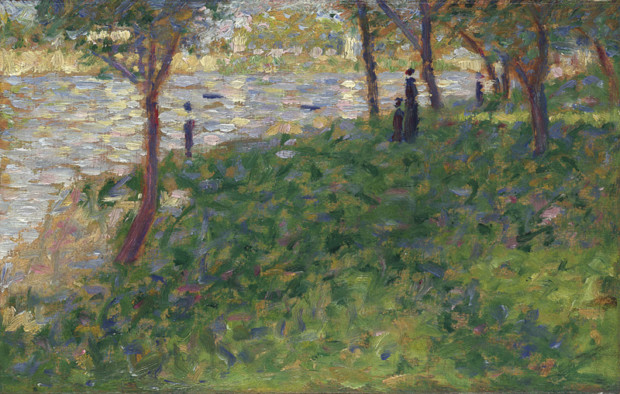
Known as croquetons—literally ‘sketchettes’—Seurat’s studies were all made on small wooden panels. Extraordinarily proud of them, he hung many in his studio. He also exhibited them regularly, demonstrating the significance he felt they had in his oeuvre. Seurat called the panels his ‘constant joy.’
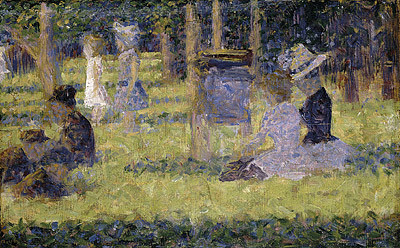
- fabric: 100% silk
- size: 65 x 65 cm
- finishing: handrolled
- Paint: Bank of the Oise at Auvers (1890)
- Panter: Georges Seurat



